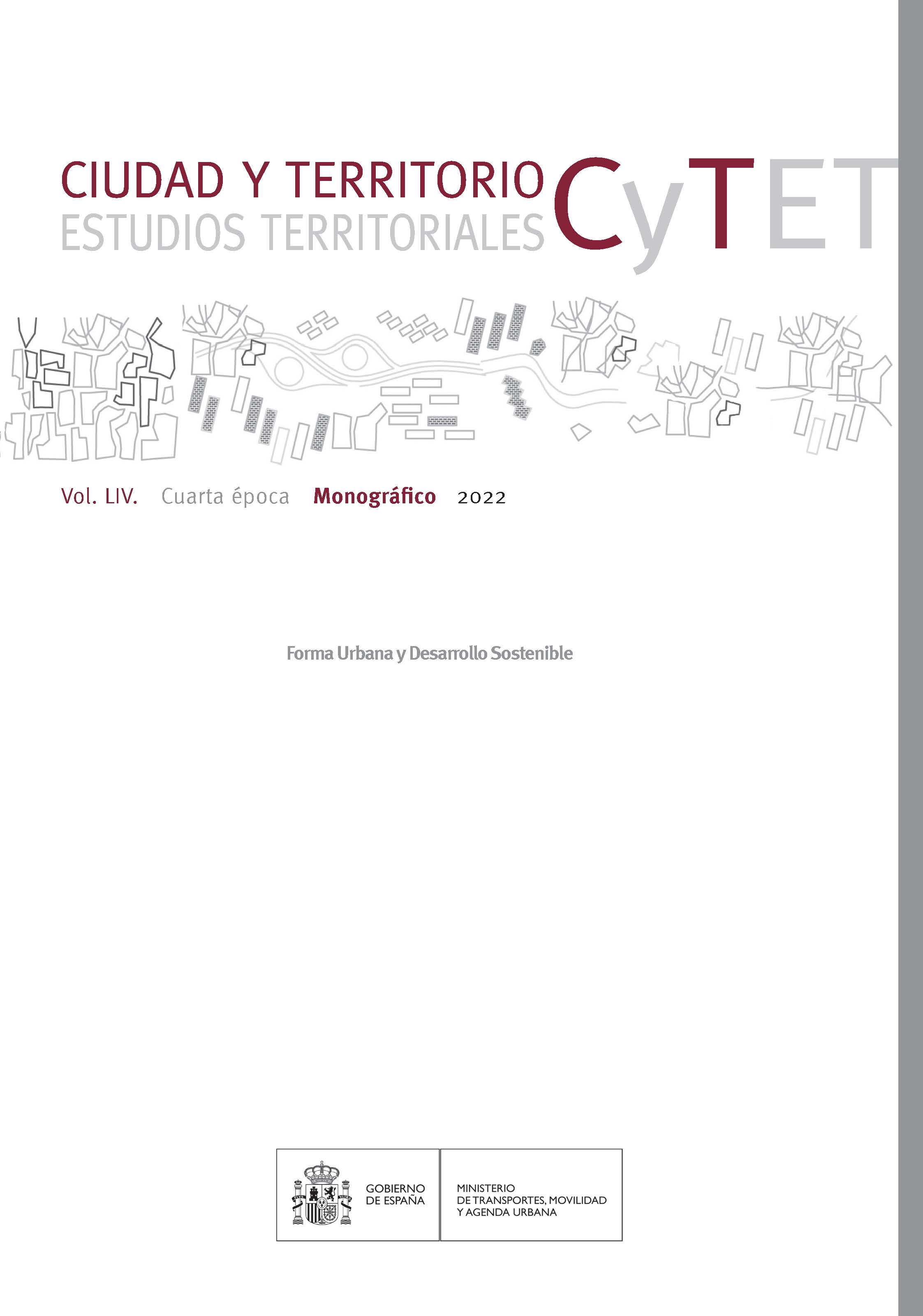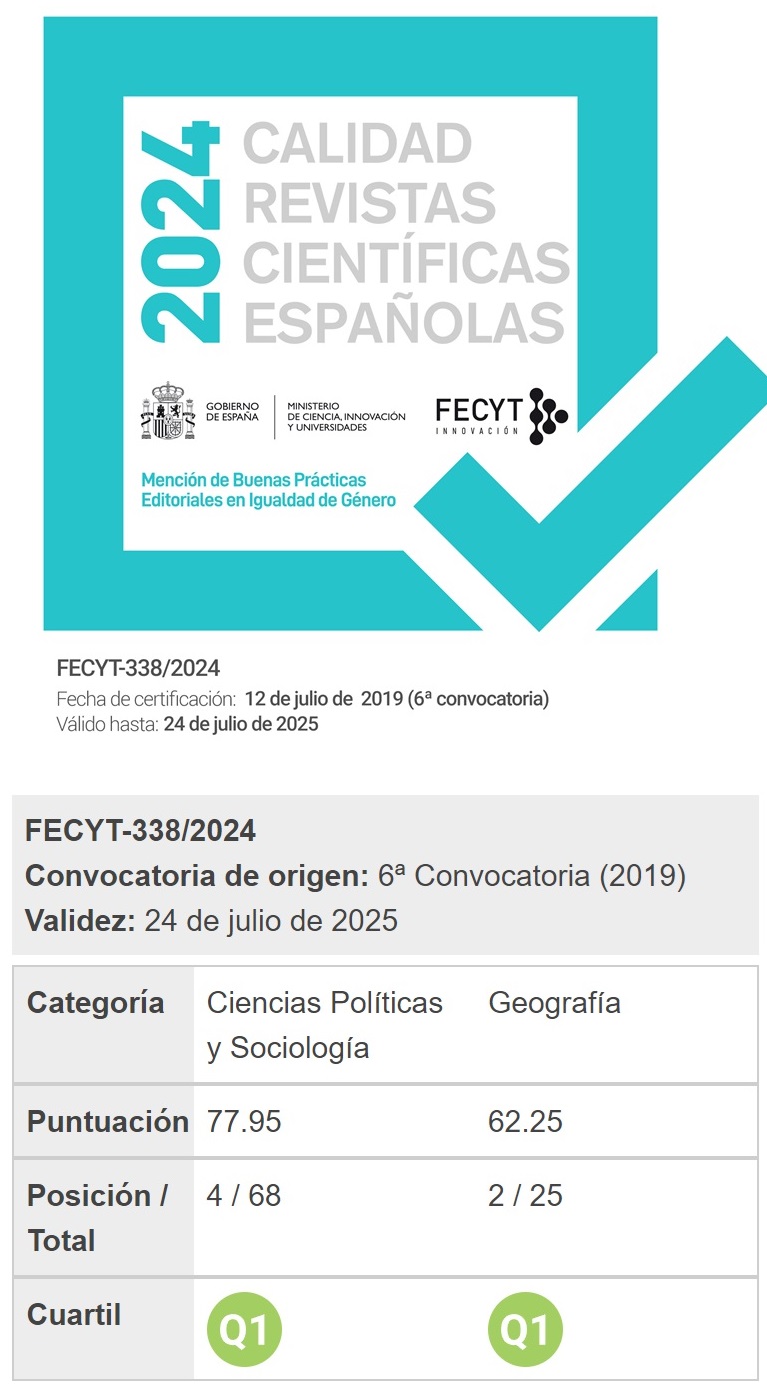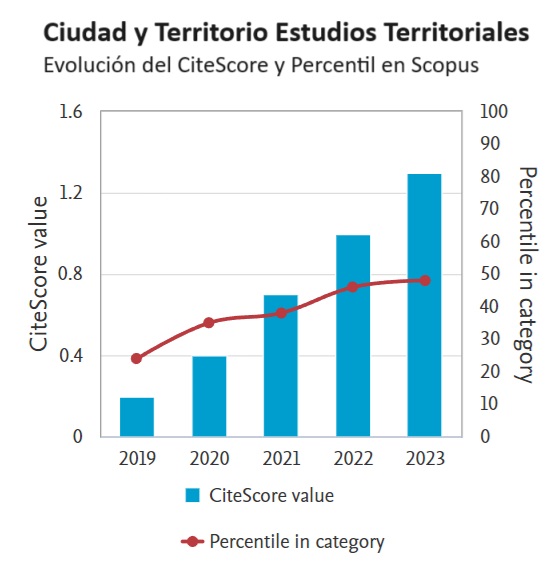Caminabilidad y movilidad en ciudades medias: un análisis a partir de los desplazamientos escolares
DOI:
https://doi.org/10.37230/CyTET.2022.M22.2Palabras clave:
Desarrollo sostenible, Forma urbana, Movilidad sostenible, Movilidad escolarResumen
La consecución de los objetivos de desarrollo sostenible pasa por la transformación de la movilidad urbana. Este artículo estudia la relación entre la forma urbana y el reparto modal en ciudades medias. Empleando técnicas avanzadas de análisis estadístico mediante modelos discriminantes, se investiga la asociación existente entre la distancia de los itinerarios, la caminabilidad de los entornos urbanos y la elección modal para los desplazamientos escolares, recogidos en una encuesta a más de mil estudiantes de educación secundaria. Los resultados muestran cómo la densidad residencial y la diversidad funcional, sobre todo en el entorno de los centros escolares, así como la densidad residencial y el diseño viario a lo largo de los caminos escolares son capaces de explicar casi la elección del modo de transporte en casi un 90% de los recorridos realizados a pie o en coche.
Descargas
Publicado
Cómo citar
Número
Sección
Licencia
Derechos de autor 2022 Borja Ruiz-Apilánez Corrochano, Eloy Solís-Trapero, Irene García-Camacha Gutiérrez, Alicia Galán-Álvarez

Esta obra está bajo una licencia internacional Creative Commons Atribución-NoComercial-SinDerivadas 4.0.
Sin perjuicio de lo dispuesto en la legislación vigente sobre Propiedad Intelectual, y conforme a la misma, el/la los/las autor/a/es/as que publiquen en CyTET cede/n a título gratuito, de modo no exclusivo y sin límite temporal al Ministerio de Transportes, Movilidad y Agenda Urbana los derechos para difundir, reproducir, comunicar y distribuir en cualquier formato actual o futuro, en papel o electrónico, la versión original o derivada de su obra bajo licencia de Creative Commons Reconocimiento-NoComercial-SinObraDerivada 4.0 Internacional (CC BY-NC-ND 4.0), así como para incluir o ceder a terceros la inclusión de su contenido en índices, repositorios y bases de datos nacionales e internacionales, con referencia y reconocimiento en todo caso de la autoría del mismo.
Además, al realizar el envío, el/la los/las autor/a/es/as declara/n que se trata de un trabajo original en el que se reconocen las fuentes que han sido utilizadas en su estudio, comprometiéndose a respetar la evidencia científica y a no modificar los datos originales para verificar o refutar una hipótesis de partida; que el contenido esencial del mismo no ha sido publicado previamente ni se publicará en ninguna otra obra o revista mientras esté en proceso de evaluación en la revista CyTET; y que no se ha remitido simultáneamente a otra publicación.
Los autores deben firmar un Formulario de Cesión de Derechos, que les será enviado desde la Secretaría de CyTET una vez se acepte su artículo para ser publicado.
Con el objetivo de favorecer la difusión del conocimiento, CyTET se adhiere al movimiento de revistas de Open Access (OA) y entrega la totalidad de sus contenidos a diversos índices, repositorios y bases de datos nacionales e internacionales bajo este protocolo; por tanto, la remisión de un trabajo para ser publicado en la revista presupone la aceptación explícita por parte del autor/a de este método de distribución.
Se anima a las/os autoras/es a reproducir y alojar sus trabajos publicados en CyTET en repositorios institucionales, páginas web, etc. con la intención de contribuir a la mejora de la transferencia del conocimiento y de la citación de dichos trabajos.








 Enlace a CyTET en Linkedin
Enlace a CyTET en Linkedin